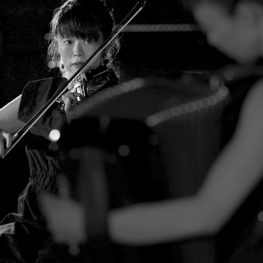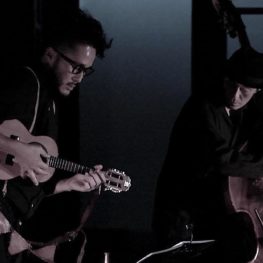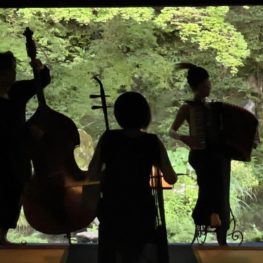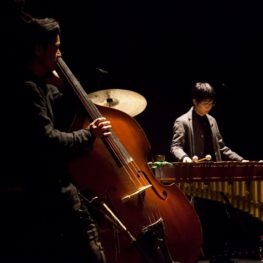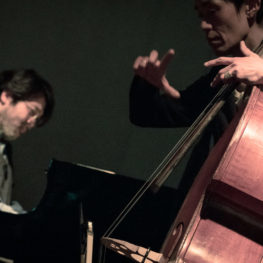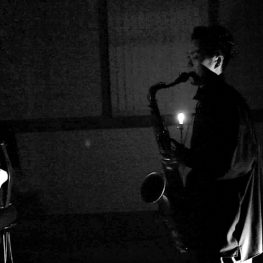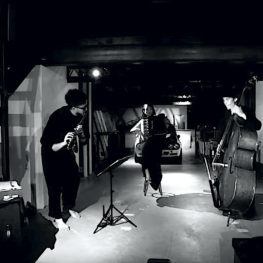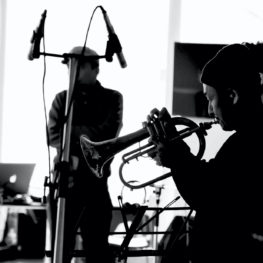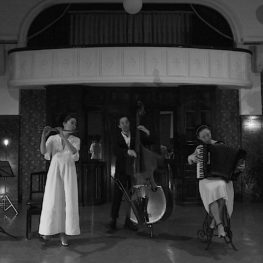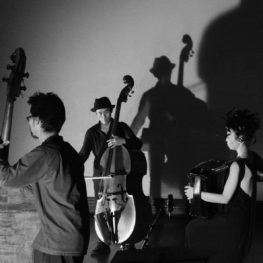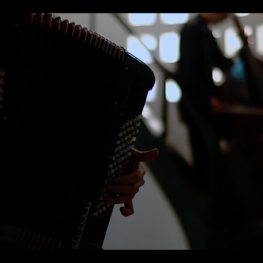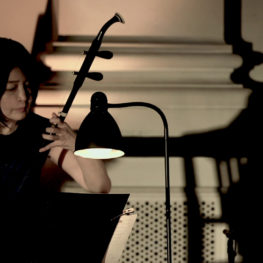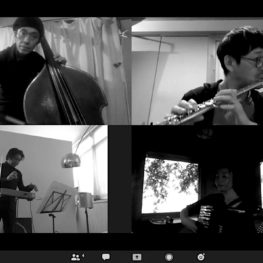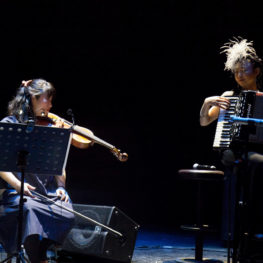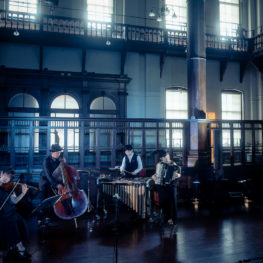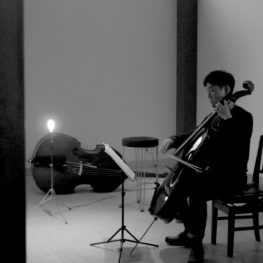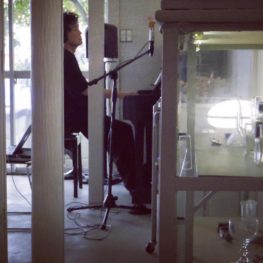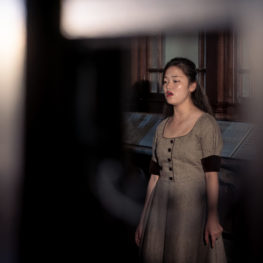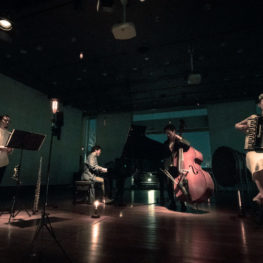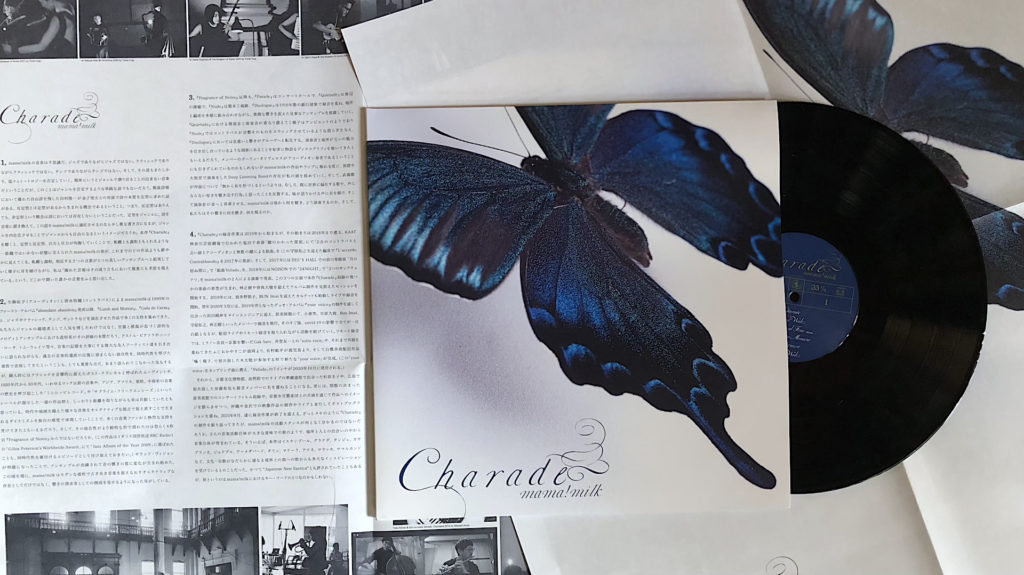
[Liner Notes ] mama!milk / Charade
True sophistication.
This immersive ensemble will take you on a mellifluous
and marvelous sound trip.
Text : Hisayasu Shimizu (Record Shop Reconquista)
Tranceration : Fumie Tsuji (memoryrecorder.com)
1.
The music of mama!milk is truly a wonder. It is jazz but not jazz; classic but not classic; tango but not tango; and vice versa. It endlessly denies tautology. To put it simply, their music cannot be defined, nor restricted, by a single genre. The discussion here, however, is not about denying the work a particular genre or not, but rather something more. In a conversation between two writers, Ryuichi Tamura and Tohta Kaneko, renowned for composing free verse in the post-war Parnassus, they sought the essence of poetry in fixed verse, discussing the notion that free verse only exists because fixed verse exists. In other words, it is possible to have free verse, but not atypical verse, within the poetic genre. It is perhaps a little messy to apply this theory to the works of mama!milk, replacing ‘form’ with ‘genre’ and ‘poetry’ with ‘music’, however, I believe that by internalizing the concept of genre, the works are completely free from the constraints of genre. When you listen to the albumCharade, the ‘fixed’ balances out the ‘non-fixed’, like attraction balances out repulsion. This creates conflict as well as harmony. You can hear this complicated state, and it’s more vivid than any of their other works so far. Conflict and harmony. Listening to the way in which these two contradictory words transform into one beautiful ensemble brings a quote to mind: “A great work will consist of numerous contradictions in the process of creation.”
2.
Since their debut album abundant abandon in 1999, mama!milk, a duo consisting of Yuko Ikoma (accordion) and Kosuke Shimizu (contrabass), has been attracting audiences from around the world with diverse styles of work such as jazz, classic, tango, and soundtrack-style music, including the following releases, Lamb and Mutton and Gala de Caras. Of course, they are acclaimed not only for the cross-genre style, but also for their sensuality and sentimental poetic melodies and ensemble aesthetics. People often take reference from great artists who deeply value the history of music, such as Astor Piazzolla, Nino Rota and Tom Waits, but the uniqueness of mama!milk cannot be described merely by musical legacy. It is important to mention that the duo has been creating music which also has a contemporary sensibility. Although not many people have mentioned it, I personally think that their music resonates with that from the post-classical movement that capture classic music as sound art, music from the 1920’s to the 1950’s in the so-called pre-rock era, and a series of works from Mississippi Records and Sublime Frequencies which featured a history of music from Asia, Africa, Eastern Europe and Latin America, while still keeping a solid distance. They have been attracting the enthusiastic support of many music fans by expressing the dynamism of their original style, which is shaped by interpreting music across various times and regions from an alternative perspective. And I believe their uniqueness started to clearly distinguish themselves when the fourth album Fragrance Of Notes was released – the album was awarded “Jazz Album of the Year 2009” by Gilles Peterson’s Worldwide Award on BBC Radio 1. I would like to mention this event to further support the contemporary nature of their work. With their sound vision becoming clearer, the ensemble grew more sophisticated, leading to a change in the sound quality. To my ears, from this period on, mama!milk seems to not only have become an alternative figure, interpreting good old music with a modern sensibility, but also showing another side of their face as sound seekers.
3.
After the release of Fragrance Of Notes, the duo continued recording albums at various locations; Parade in a concert hall, Quietude in ruins by the sea, Nude in an old print factory and Duologue in an old bank built in 1916. Allowing the combination of the location and orchestration to be diverted, they presented marvellous ensembles of rich sounds. In Quietude, the resonating layers of environmental and instrumental sound evokes ambient music; in Nude, a fluctuation effect was created by contrabass as if it sways the sound as a whole; and in Duologue, the sound of breathing is transformed into a grove. Their discography shows us how the performers and the locations are interacting with one another to bring out their charms. Every time I encounter mama!milk’s work or live performances, Deep Listening Band comes to mind, maybe because of Pauline Oliveros, the band’s accordionist, who also performed in a cave and cathedral. And I contemplate Toru Takemitsu’s statement about an act of composition: “Instead of creating something out of nothing, it is about an act of listening to songs spread around the world and unvoiced whispers.” Places will listen to voices talking to us, and performers will develop them into sounds. What is mama!milk hearing and how do they play, and what do we hear and perceive from their music, I wonder?
4.
The recording of Charade started in 2019, however the actual beginnings date back three years prior. In 2016, “Suite for 2 Contrabasses, Old Doors, Accordion, and Numerous Keys” was premiered at The locked room, an exhibition by Japanese artist Chiharu Shiota, held at Kanagawa Arts Theatre (KAAT). (Later in 2017, the duo released the album L’accordo Contrabbando in this ensemble with Takuyuki Moriya.) In 2017, “Veludo” was created for Hideki Maekawa’s solo exhibition Tsuki no Inumani at DEE’S HALL. In 2018, “Sanctuary” was first performed by the duo for 24NIGHT, an event held at NOISON. These three performances formed the foundation of some of the songs recorded for Charade, and the duo started to make a series of sessions with Masaki Hayashi and Daiho Soga, focusing on creating a new album. In 2019, mama!milk formed a quartet together with Atsuko Hatano and BUN Imai, and started to perform live concerts while recording songs. In March 2020, the duo produced recordings at the Hara Museum with musicians such as Emi Ogura, Daisuke Ichihara, BUN Imai, Takuyuki Moriya and Masaki Hayashi, and with Suminobu Hamada as the main sound engineer, whom they got to know through the production of their album your voice. Shortly afterwards, all plans and schedules were cancelled due to the pandemic, but they continued to stay active and incorporated a live streaming event as well as a remote recording session. For the remote recording, “sotto voce” was formed by Gak Sato and Inobori Yuichi by networking with Milano, Nara and Kyoto, and a new version of your voice was produced with Yasuko Fujioka (Morioka), Kohei Arimura (Kagoshima) and Satoshi Kimura. The duo had collaborated with Kimura for the first time for “The whisper seeds”, a video installation made by shirasagi, an art gallery – this your voice is included as a 7-inch Veludo, which was released in October 2020.
Later, other musicians joined the ensemble; Keiko Sugihara, who they met during the preparation for a live show at The Museum of Kyoto and the Honen-in Temple, and Kazuya Kato, with whom they collaborated in Hiroshima. The duo developed the album concept through a filming of a concert at the Hara Museum of Contemporary Art, as well as a collaboration with the City of Kyoto Symphony Orchestra, playing a concert and producing a visual work in Okinawa and Kanazawa. After hours of post-production, the recording process was finally completed in August 2021. We now went through a brief synopsis of the production of Charade, and I suppose you could get a glimpse of how mama!milk works, produces, and approaches recording. Their music activities can be described as a journey, in one regard. Through encounters with people and places, their music has been created. By the way, I was told that they were greatly inspired by journeys to various places where cultures and religions are diverse yet somehow connected to each other; Istanbul, Granada, Tangier, Casablanca, Jodhpur, Ahmedabad, Tallinn, Matera, Athena, Melaka and Samarkand, just to name a few. With their style once described as “Japanese New Exotica”, a ‘journey’ may be one of main themes for mama!milk.
5.
“Amber” was the first song that I listened to from this album. A heavy, swelling and smoking contrabass, a wriggling erhu, a lithe and floating echoey piano, a graceful and sensual accordion, a conscious-awakening flute, and an ambient-soundscape percussion. Listeners will be simply overwhelmed by their music which unites all these sound elements. After listening to some parts, you might find it feels avant-garde, and it will evoke some sort of affection in you, leaving you wondering where it came from. With the resonance of not only sound and melody but also the atmosphere of the performers, the whole presence of the acoustic space is incredible. Furthermore, I was astonished to feel as if mama!milk’s passionate sound spirit, which condensed with their musical essence, appeared right in front of me. Another interesting piece is “sotto voce”. They recorded it simultaneously via video conference system, turning the Covid-19 situation to their advantage. They composed the piece knowing the possibility of time lag occurring through different system environments. The oscillating sound of a theremin resonates as if it were a sad and graceful prayer, and it somehow reminded me of Djivan Gasparyan, an Armenian duduk player. Perhaps, because of the compassionate love one can feel in the sound. Certainly, this piece has the mood mixed with Asia and Europe, which is similar to Djivan Gasparyan’s style. As for the title song “Charade”, it consists of four versions recorded with different ensembles, and each version is arranged differently. You will realize that nostalgia and lyricism also have various faces, and every piece has its own excellence. Furthermore, you will be fascinated by “Tango al Fine” consisting of three versions. The characters of the instruments are probably the trigger; the one featuring a harp reminded me of Hugo Diaz, “Alcazar”, the one with a whistle, is reminiscent of a scenery with gaucho, and “Sombra” featuring a saxophone somehow brought me an image of melancholy turning into sensuality. A Cuban musician, Negro Aquilino, also came to mind for some reason, who played flamenco with a saxophone. Other than the above-mentioned tracks, I would like to mention a few others: “Azul”, featuring a Brazilian string instrument cavaquinho, which is often used in samba or choro and its lovely melody line, has a modern an exotic aura. “Camelia” is all about grace starring a double act of viola and accordion. “Ephemera” featuring vocals, “Moment to Moment” interweaves flugelhorn and contrabass into a jazz groove, “Peonia” giving off an aura of China and Central Asia with the sound of an erhu, “Sanctuary” featuring aesthetics of minimalism with drone-like calm resonances, “Veludo” consisting of multi-layered vibrancy with a characteristic insert of an abstract string arrangement in the middle of the track, to name but a few. Each track has different concepts and approaches; however, all have the same sensations, which I felt after first listening to “Amber”, intensified.
6.
Nevertheless, the character of this album, such as the impeccable balance between the sounds of instruments, the brilliant resonance, sensuality and melancholy, and the beautiful melodies in which graceful lyricism shines, is beyond perfect. The sound resonates, the atmosphere vibrates, the echoes float near and far. Many of us may get the impression that mama!milk has reached whole new heights, while still staying true to their origins. For example, if you listen to the music by Argentinian pianist Gerardo Gandini, who was also a member of Astor Piazzolla’s orchestra, it will make you think about how the music should be viewed as a whole beyond tango music, not because he created tango but also contemporary music or jazz, but because his music had an energy which attracted some sort of inevitability of music – the ‘situation’ meets ‘player’ which creates ‘music’. The same applies to the various ensembles of Charade. There is endless inevitability in their music. Naturally, in their case, mama!milk finds a ‘situation’, encounters ‘players’ and ‘music’ is created. It may be a cliché to say that music is where magic lives, however I am sure there is something special living in this album which I cannot ignore.
7.
I have to admit, I feel like my way of listening to music has changed since encountering Charade. I was reflecting back to the time when my feelings changed and I started to see the world differently after having experienced Edward Yang’s film, Roberto Bolaño’s novel and Josef Koudelka’s photography. It is as if a new seed were cast inside of me, and this feeling still remains.
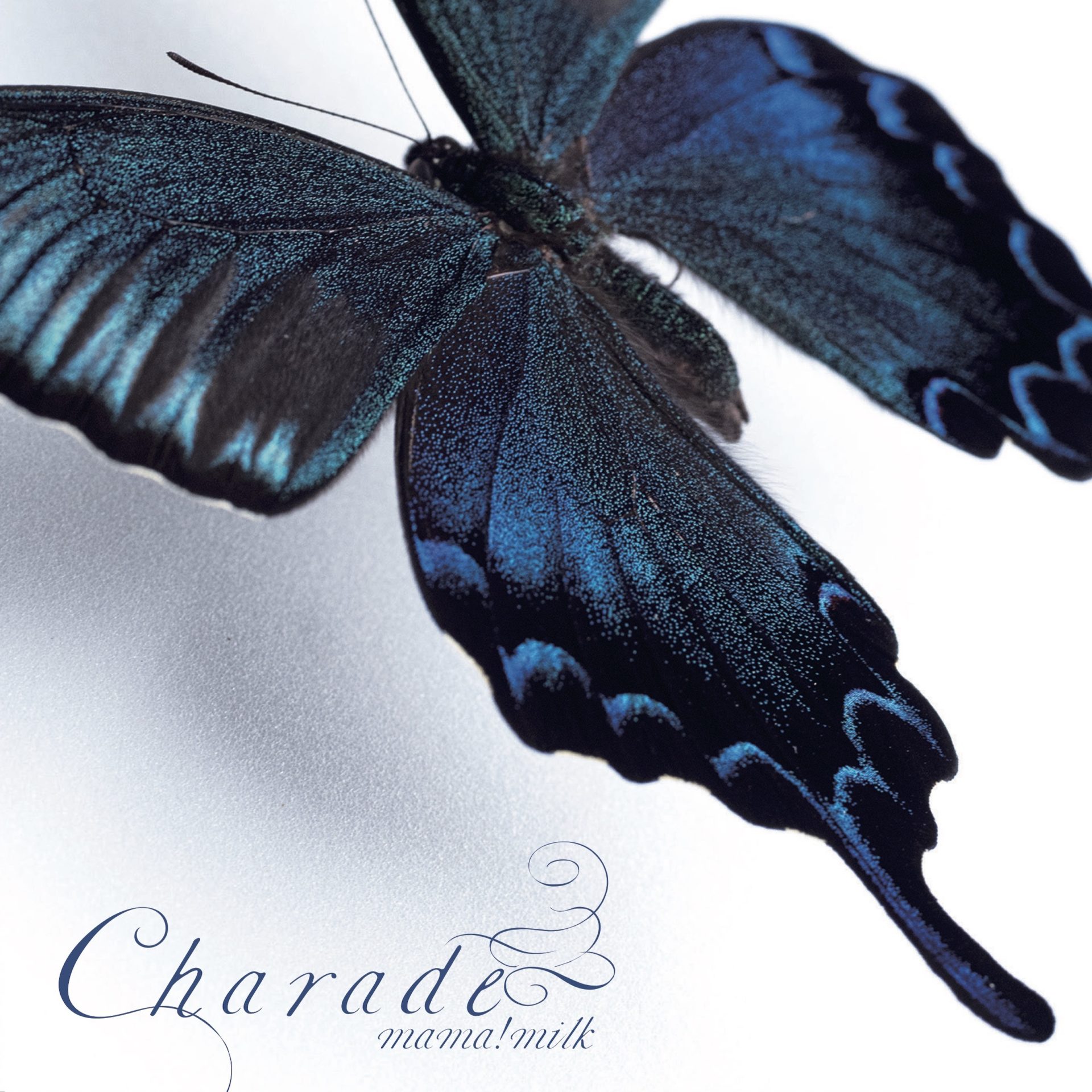 ▶︎mama!milk / Charade
▶︎mama!milk / Charade

